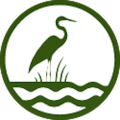Poda’s Paddling Pet Peeves

Paddling Pet Peeves
by Nick Napoda
For many of you, a swamp tour will be your first paddling
experience. Avoid these six things enhance your time on the water.
Lilly Dipping:
Lilly dipping is when you take short, effortless strokes, hardly wetting the paddle in the water. The
result? You get left behind! The correction? Simply take longer, more powerful strokes, starting at the
foot and ending just behind the hip. Lilly dippers can often be found in the bow of a tandem kayak or
canoe, leaving the stern paddler to do all the work.
Holding the paddle upside down:
The edge of the paddle blade is asymmetrical and shaped to match the angle it enters the water. It still
works upside down, but not quite as well, plus it looks silly. On our paddles, simply hold them with the
logo upright. This is one I catch even experienced paddlers doing.
Using all arm muscle:
You’ll make it through the tour this way, but your core has much greater strength and endurance. Use
your whole body to propel the kayak, powering from your feet and unwinding through your torso like a
spring. Your arms should remain fairly straight during the stroke – if they hurt after the paddle, you need
to work on your torso rotation. It can mean the difference of being tired after a few hours versus being
able to paddle all day!
Rotating the paddle when reversing:
There is no need to flip the paddle blade face when backing up. Simply hold the paddle with the spoon
side facing you whether you are going forwards or reverse. Maintaining proper indexing on the paddle
ensures you can react quickly with a support or maneuvering stroke if needed – unlikely in the swamp but
critical when sea or whitewater kayaking.
Paddling like you’re in a Lazy Boy:
Lean way back in the seat and it’s impossible to apply good torso rotation. Keep an upright, active
posture to ensure efficient paddle strokes. This can really pay off when the going gets tough, such as
when we encounter water hyacinths. To find good posture, it may be necessary to adjust the backhand
and your seating position in the kayak.
Calling a Paddle an Oar:
Whatever you do, DO NOT CALL IT AN OAR! Paddles come in many shapes and sizes to propel an
array of paddlecraft, from single-bladed canoe and SUP paddles to double-bladed kayak paddles. Oars,
on the other hand, are used in pairs for rowing. Oars attach to the boat via a pivot point called an
oarlock and typically propel the boat in the opposite direction the person is seated. This is my #1 pet
peeve.
Truth be told, none of these six things will likely play a critical level of importance on your swamp tour.
However, implementing good technique early on will provide the foundation you need to have a fantastic
paddling experience, both now and on future adventures!
